Louth, in the province of leinster, Ireland 作者: 来源: 发布时间:2021-04-12
I.Population and Area
Population in 2011:122,897
Population in 2016:128,884
Population Density: 149 people per square km
Total Area: 318.92 sq miles
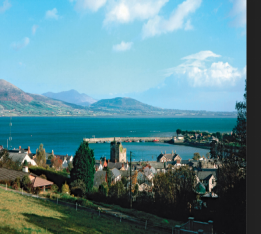
II.Natural Geography (Environment, resource and transportation)
It is named after the village of Louth. Louth County Council is the local authority for the county. County Louth is colloquially known as 'the Wee County' as it is Ireland's smallest county by area (826 km2 (319 mi2). It is the 18th-largest in terms of population. It is the smallest of Leinster’s 12 counties by size and the sixth-largest by population.
Despite its fairly average total population, Louth is the second most densely populated county in Ireland behind Dublin, and the fourth on the island of Ireland, due to its small size.

Most of Louth is part of a central lowland, generally about 200 feet (60 metres) above sea level, and occurrences of glacial drift are found everywhere. Only one-eighth of the county is unimproved land, of which the largest stretch is in the mountains of the Carlingford Peninsula in the northeast. Many patches of peat bog have been cleared and the land used for pasture and crops.
About two-thirds of the population live in towns, especially Dundalk and Drogheda, both urban districts and seaports. Local agriculture is transitional between the small farm regimes in adjacent areas of Northern Ireland and the large grazing farms of Meath. Major crops include oats and vegetables. There is some light industry, but it is generally limited to the production of beer, textiles, and food products. Tourism has become an increasingly important source of income.
Reference website: https://kids.kiddle.co/County_Louth
Transportation:
County Louth is 38 mi from Dublin Airport (Dublin, Ireland). Dublin Airport (Dublin, Ireland) Right now,49 airlines operate out of Dublin Airport. Dublin Airport offers nonstop flights to 119 cities. Every week, at least 84 domestic flights and 1,082 international flights depart from Dublin Airport.
III.ECONOMY
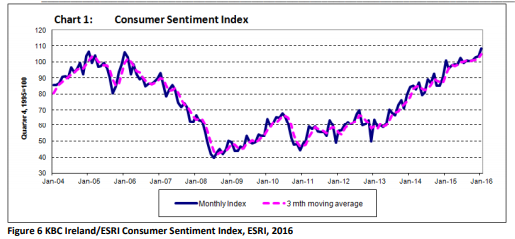
IV.Industrial Characteristics:
1)Case Tractors Farm Machinery Case Tractors Manitou Louth
MidLouth Garage - Main farm machinery dealers for Case IH, McHale, Kverneland, Hardi, Manitou, Sumo, McConnel, Rauch, HiSpec, Strautmann and Fleming in Ireland Tractor & Farm Machinery Specialists in Ireland Full range of Mc Hale balers in stock!!
2)Mid Louth Garage
Mid-Louth Garage - Main farm machinery dealers for Case IH, McHale, Kverneland, Hardi, Manitou, Sumo, McConnel, Rauch, HiSpec, Strautmann and Fleming in Ireland
Tractor & Farm Machinery Specialists in Ireland
V.Attractions
Dundalk Stadium is a horse and greyhound racing venue in Ireland. It is located to the north of Dundalk in County Louth. The total build cost €35million with a modern grandstand, elevated viewing areas, restaurant and bars.
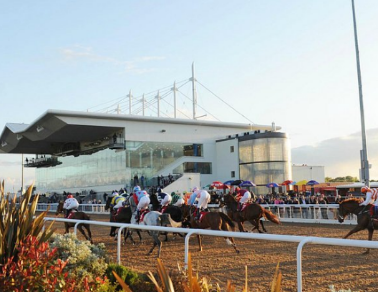
Mellifont Abbey, Collon, Co. Louth, Ireland, is home to a community of monks. We live monastic life according to the Rule of St Benedict in the Cistercian tradition (O.C.S.O.). In response to a personal vocation or calling from the Lord, we dedicate ourselves to the worship of God in …
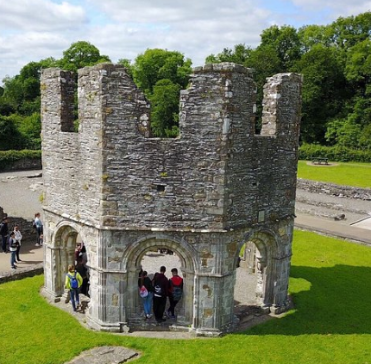
VI.History
County Louth is named after the village of Louth, which in turn is named after Lugh, a god of the ancient Irish. Historically, the placename has had various spellings; "Lugmad", "Lughmhaigh", and "Lughmhadh" (see Historic Names List, for full listing). Lú is the modern simplified spelling.
The county is steeped in myth, legend and history, and is a setting in the Táin Bó Cúailnge. Later it saw the influence of the Vikings as seen in the name of Carlingford Lough. They also established a longphort at Annagassan in the ninth century. At this time Louth consisted of three sub-kingdoms each subject to separate over-kingdoms: Conaille (Ulaidh); Fir Rois (Airgialla); and, the Fir Arda Ciannachta (Midhe). The whole area became part of the O'Carroll Kingdom of Airgialla (Oriel) early in the 12th century.
A number of historic sites are in the county, including religious sites at Monasterboice, Mellifont Abbey and the St Mary Magdalene Dominican Friary.
The Normans occupied the Louth area in the 1180s, and it became known as 'English' Oriel, to distinguish it from the remainder ('Irish' Oriel) which remained in Irish hands. The latter became the McMahon lordship of Oriel of Monaghan.
In the early 14th century, the Scottish army of Edward Bruce was repulsed from Drogheda. Edward was finally defeated, losing his claim to the High Kingship of Ireland along with his life, in the Battle of Faughart near Dundalk, by a chiefly local force led by John de Bermingham.
In 1189 AD, a royal charter was granted to Dundalk after a Norman nobleman named Bertram de Verdun erected a manor house at Castletown Mount. Later in 1412 , a royal charter was granted to Drogheda. This charter unified the towns of Drogheda-in-Meath and Drogheda-in-Uriel (Louth) as a County in its own right, styled as ‘the County of the town of Drogheda’. Drogheda continued as a County Borough until the setting up of County Councils, through the enactment of the Local Government (Ireland) Act 1898, which saw all of Drogheda, including a large area south of the River Boyne, become part of an extended County Louth.
Until the late 16th century, Louth had been a part of Ulster, before being included as part of Leinster after a conference held at Faughart (in 1596) between the Chiefs of Ulster (O'Nial/O'Niel and O'Donel/McDonnel), on the Irish side, and the Archbishop of Cashel and the Earl of Ormonde on that of the English.
The 16th and 17th centuries featured many skirmishes and battles involving Irish and English forces, as it was on the main route to 'the Moiry Pass' and the Ulster areas often in rebellion and as yet uncolonised. Oliver Cromwell attacked Drogheda in 1649 slaughtering the Royalist garrison and hundreds of the town's citizens. Towards the end of the same century, the armies of the warring Kings, James and William, faced off in South Louth during the build-up to the Battle of the Boyne the battle was fought 3 km west Drogheda. Drogheda held for James II under Lord Iveagh, but surrendered to King William (III) of Orange the day after the battle of the Boyne.
In 1798, the leaders of the United Irishmen included Bartholomew Teeling, John Byrne, and Patrick Byrne, all from Castletown; Anthony Marmion from Louth Town and Dundalk, Anthony McCann from Corderry; Nicholas and Thomas Markey from Barmeath, and Arthur McKeown, John Warren, and James McAllister from Cambricville. They were betrayed by informers, notably a Dr. Conlan, who came from Dundalk, and an agent provocateur called Sam Turner, from Newry. Several leaders were hanged.
The priest and scientist Nicholas Callan (1799–1864) was from Darver.
Reference website: https://kids.kiddle.co/County_Louth
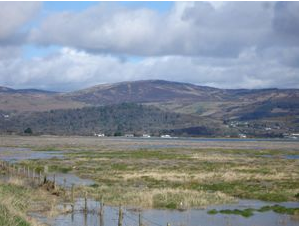
VII.Other information:
The smallest county in Ireland, County Louth has a proud tradition of poetry and music and is this year, in particular, looking forward to the likes of the Midsummer’s Artisan Market in Drogheda and the annual harp festival, An Chúirt Chruitireachta.
As part of the Creative Ireland county initiatives and beyond, there are many exciting events taking place in the Wee County over the next months and many ongoing initiatives constantly ensuring the emphasis in creativity in the county. Here's a look at some of the best:
Bristle: Hair and Hegemony
"Bristle: hair and hegemony" draws on the rich scientific, literary, political and aesthetic contexts in which hair plays a central role. It brings together a range of artworks and objects from the 17th century to the contemporary moment, and from diverse ethnic and cultural contexts. It features work by historic and contemporary artists. This exhibition at the Highlanes Gallery in Drogheda runs July 8 - September 23.
The Tempest by Encore Productions
Encore Productions is composed of clients from the RehabCare Resource Centre in Dundalk. The center provides services for 60 adults with intellectual disabilities from all over County Louth. Their version of Shakespeare’s The Tempest will involve 16 actors from the center with a crew of four staff and volunteers.
The Tempest will open in An Táin Arts Centre, Dundalk, and then tour to venues throughout Ireland, north and south. Encore Productions will also facilitate schools workshops, workshops with Social Care Students, and community groups
"Art as Exchange" at Creative Spark
Creative Spark is the center for creativity and innovation in the North-East. Based in Clontygora in Dundalk, Creative Spark offers training, work spaces, artists’ studios and a printmaking facility, aimed at both enterprise and community. The bi-weekly "Art as Exchange" is an informal, all-inclusive group of visual artists who meet together for the sake of making public art that is accessible, experiential, participative and or/free.
VIII.Contact information
-Mayor
Darren Hobson
Town Clerk
The Sessions House
Eastgate
Louth
Lincolnshire
LN11 9AJ
Tel: 01507 355895
email admin@louthtowncouncil.gov.uk
Reference website: https://www.louthtowncouncil.gov.uk/louth-mayor/
